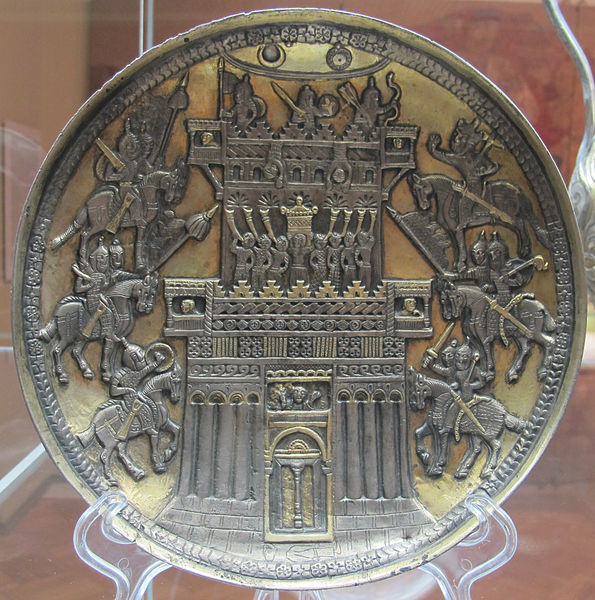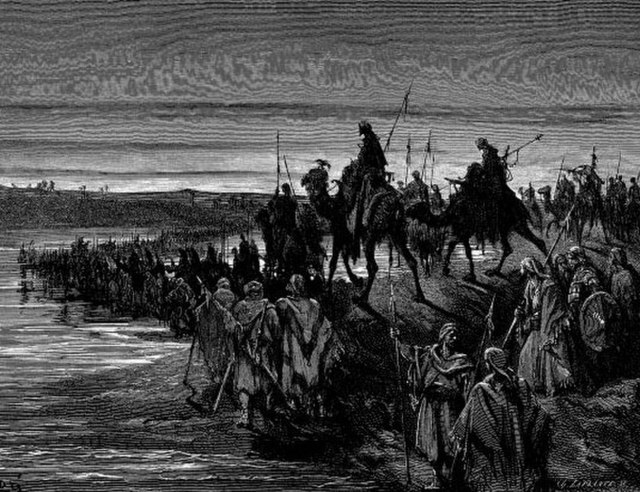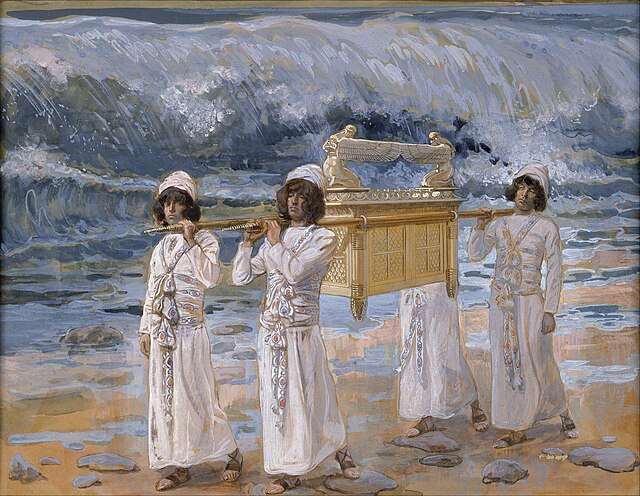The Battle of Jericho, as described in the Biblical Book of Joshua, was the first battle fought by the Israelites in the course of the conquest of Canaan. According to Joshua 6:1–27, the walls of Jericho fell after the Israelites marched around the city walls once a day for six days, seven times on the seventh day, with the priests blowing their horns daily and the people shouting on the last day. Excavations at Tell es-Sultan, the biblical Jericho, have failed to find any traces of a city at the relevant time, which has led to a consensus among scholars that the story has its origins in the nationalist propaganda of much later kings of Judah and their claims to the territory of the Kingdom of Israel. The lack of archaeological evidence and the composition, history and theological purposes of the Book of Joshua have led archaeologists like William G. Dever to characterise the story of the fall of Jericho as "invented out of whole cloth".

Depiction of the battle by Jean Fouquet (c. 1415–1420)
The Siege of Jericho, in a Nestorian Christian plate made by Sogdian artists under Karluk dominion, in Semirechye. Cast silver of the 9th-10th century, copied from an original 8th century plate.
The Book of Joshua is the sixth book in the Hebrew Bible and the Old Testament, and is the first book of the Deuteronomistic history, the story of Israel from the conquest of Canaan to the Babylonian exile. It tells of the campaigns of the Israelites in central, southern and northern Canaan, the destruction of their enemies, and the division of the land among the Twelve Tribes, framed by two set-piece speeches, the first by God commanding the conquest of the land, and, at the end, the second by Joshua warning of the need for faithful observance of the Law (torah) revealed to Moses.
Early 4th-century CE manuscript of Joshua from Egypt, in Coptic translation.
Joshua and the Israelites crossing the Jordan (Gustave Doré)
Joshua passing the River Jordan with the Ark of the Covenant, painted by Benjamin West, 1800
The Ark Passes Over the Jordan (watercolor c. 1896–1902 by James Tissot)






